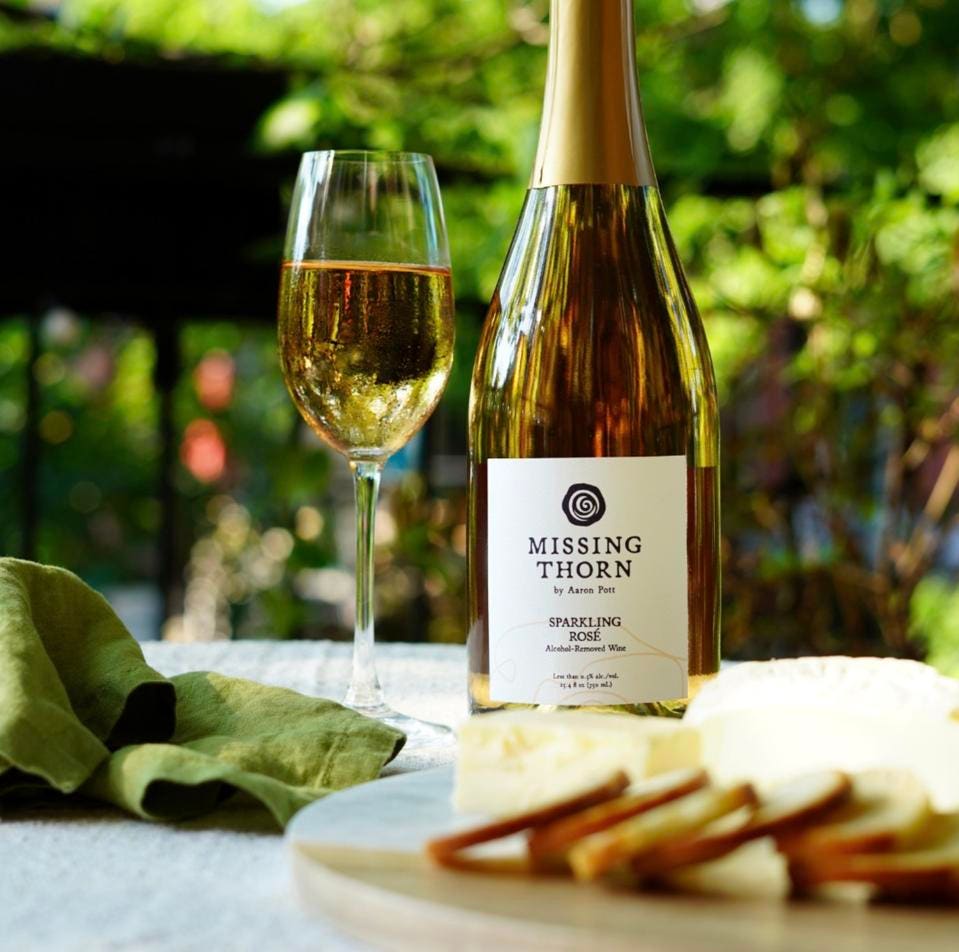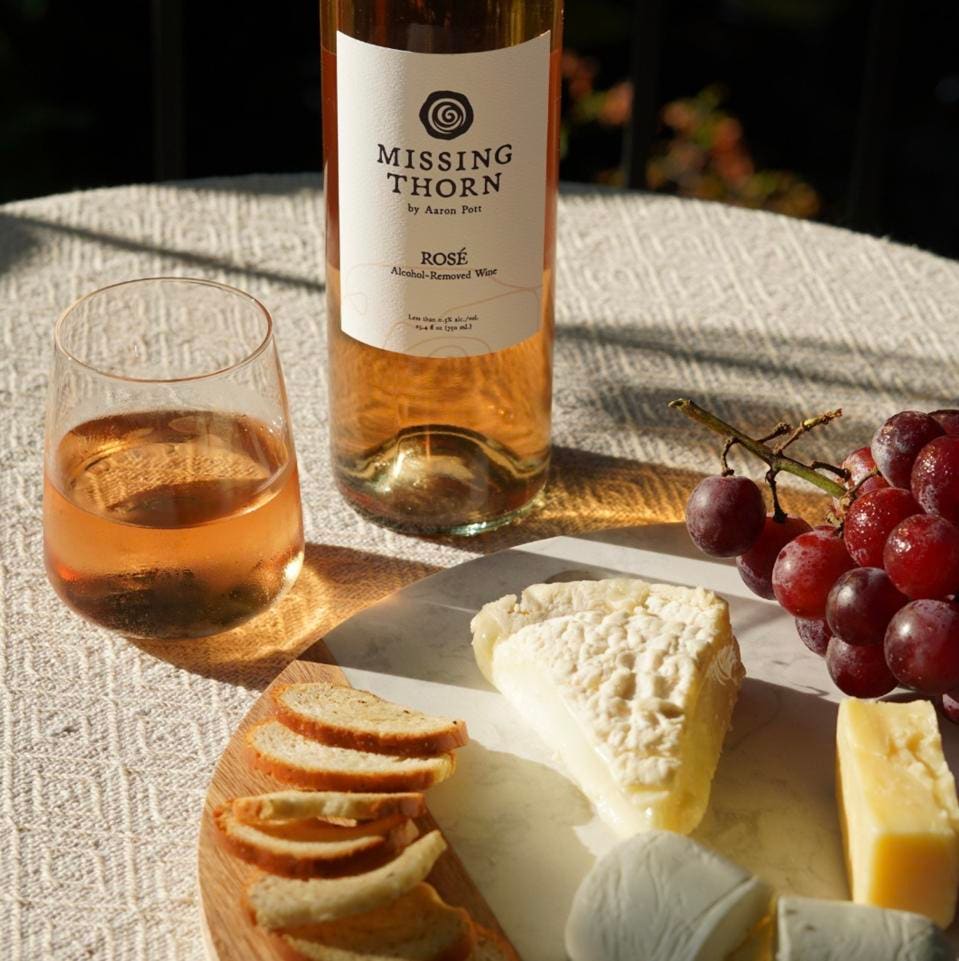Forbes
The Future Of Wine: Aaron Pott And The Rise Of Non-Alcoholic Elegance


In the world of winemaking, where passion meets precision, few names carry as much weight as Aaron Pott. With a storied career that spans decades, Pott has earned his place among the industry’s most innovative and influential figures. Known for his artistic approach to winemaking, Pott has “done it again”—this time by reimagining wine in a way few thought possible: removing the alcohol without compromising the traditional essence of wine.
Pott’s journey into wine began serendipitously during a childhood trip to Paris, where a French waiter swapped his request for milk with a glass of wine. That moment planted the seed for a lifelong passion. Over the years, Pott developed his craft, producing exceptional wines for iconic labels such as Newton, Quintessa, and Beringer. Today, he is channeling his expertise into creating a new category of wine—one that redefines how people celebrate and connect, blending tradition with innovation to meet the needs of modern lifestyles.
His latest venture, in collaboration with Stephanie Honig—a veteran of LVMH and Honig Vineyard and Winery—is Missing Thorn, a premium line of alcohol-removed wines. The idea took root during a kitchen conversation about the rise of non-alcoholic beverages. Together, they saw an opportunity to create wines that retained the depth, complexity, and satisfaction of traditional vintages—without the alcohol.
“I love a challenge,” says Pott. “When working on the Missing Thorn Sparkling Rosé, I thought about my most pleasurable experiences with Champagne. I kept coming back to old grower Champagnes. It’s a thrill to try and model the wines I love.”
Pott’s ability to blend artistry with science has enabled him to master a feat many have failed at: crafting alcohol-removed wines that are indistinguishable in quality and experience from their traditional counterparts. The Missing Thorn team takes no shortcuts. They taste hundreds of wines to select only those that retain their integrity after undergoing the alcohol-removal process. “Not all wines de-alc well,” Pott explains. “That’s the secret.”

Stephanie Honig and Aaron Potts
What sets Missing Thorn apart is its ability to enhance celebrations without the downsides associated with traditional wine. Non-alcoholic wines allow consumers to enjoy all the pleasures of a great wine—elevated flavors, shared connections, and the sense of occasion—while avoiding hangovers, impaired decision-making, or negative health effects. It’s wine for a modern lifestyle: vegan, gluten-free, naturally made, with only 30 calories and 2 grams of sugar per serving.
“Missing Thorn is about inclusivity,” says Honig. “Whether you’re choosing not to drink for health, personal preference, or any reason at all, you should still be able to enjoy the richness and bonding that wine brings to a celebration.”
Launched in mid-2024, Missing Thorn has already made its way into notable venues including Napa Valley’s Farmstead and Oakville Grocery, as well as Gramercy Tavern and Union Square Café in New York City. It’s also featured on the core menu at Fleming’s Steakhouse locations nationwide.
This success is part of a larger movement. The non-alcoholic wine market is booming, growing from $50 million in 2022 to $340 million in 2023, making it one of the fastest-expanding segments of the beverage industry. As alcohol consumption declines and consumers embrace Dry January and other mindful drinking practices, demand for high-quality alternatives is soaring.
According to data from a NCS Solutions January 2024 survey, Gen Zers planned to drink less alcohol in 2024, which was a jump of 53% year over year. 61% said they planned to cut back on their alcohol consumption, compared to 40% who said they planned to drink less in 2023.
The sober-curious movement is picking up momentum, especially among millennials. The latest survey shows that 49% of millennials plan to drink less in 2024—a big jump from just 26% last year. Overall, 41% of Americans say they’re planning to cut back on alcohol next year, compared to 34% the year before. This follow-up survey builds on one from January 2023, and it’s clear the trend is gaining traction, thanks in large part to younger generations embracing a less-is-more approach to drinking.

Stephanie Honig and Aaron Potts
“For me, wine is about bringing people together,” says Pott. “With Missing Thorn, we’re creating moments that transcend the glass—where everyone, regardless of their drink of choice, feels part of the celebration.”
Aaron Pott’s legacy as a master winemaker has always been rooted in his ability to innovate while honoring tradition. With Missing Thorn, he has once again broken new ground, proving that wine’s magic lies not just in its alcohol, but in its ability to connect, celebrate, and inspire. Consumers no longer have to choose between indulgence and health or tradition and innovation. Missing Thorn is a wine for everyone, bringing people closer without the thorn.
We chatted with Stephanie Honig, Napa Valley vintner and partner at Missing Thorn on food pairings, trends and more. Here’s what she had to say.
When it comes to pairing food with non-alcoholic wine, is it different from pairing with alcoholic wines?
The best food and wine pairings improve the dining experience by enhancing the components of a dish and highlighting and the characteristics of a wine. When I pair food with wine, I try to make every bite taste like the first bite.
One of the factors I think about is the intensity of the flavors. In general, we pair lighter flavors foods with lighter flavored wines. For example, a light Albarino pairs beautifully with a delicate white fish while a fruit forward Malbec or Cabernet Sauvignon pairs better with a hearty grilled steak.
I also think about the acidity in the wine. For example, a pasta with a tomato based sauce which is high in acidity pairs best with a wine that is also high in acidity like a Barbera or Sangiovese. Many Vietnamese and Thai dishes are prepared with lemon, lime and vinegar which make them perfect pairings for aromatic wine wines like dry Rieslings with citrus, green apple and high acidity.
This holds true for both wines that contain alcohol and wines that do not. Missing Thorn starts as a fully fermented wine with alcohol. We work exclusively with wines that will keep their integrity, structure and balance as an alcohol removed wine. Therefore, consumers can enjoy the wines, the food and elevate their experiences without encountering the effects of the alcohol.

Missing Thorn wine pairing
What are the best pairings for each of your wines and why?
Sparkling white
Buttered popcorn, potato chips, deviled eggs, fried chicken, white truffles, oysters.
Sparkling rose
Mac n’ cheese, ceviche, sushi, sashimi, smoked salmon, caviar, charcuterie boards, aged cheddar, brie.
Still white
White fish, seafood risotto, fish tacos, shellfish, light pastas, grilled vegetables, manchego, burrata, gouda, feta.
Still rose
Grilled full-flavored fish (sea bass, trout, tuna and salmon), tomato-based pastas, chicken cacciatore, root vegetables, sharp cheddar, brie, and goat cheese.
Still red
Grilled meats, barbeque, puled pork, stews, lamb, eggplant, squash, dishes with sage, rosemary, cumin, chocolate and piquant specialty cheeses like blue cheese, asiago, parmesan, and gorgonzola.
Are restaurant and bars are becoming more interested in non-alcoholic wines? What are your thoughts on this trajectory?
Absolutely. When I contact a beverage director, they tell me they need more nonalcoholic options. In my 25 years of marketing and selling wines, these are the easiest wines to sell. We are creating a new category and meeting the consumer where they are.
There are many great tasting nonalcoholic beers and creative mocktails however, there are not yet many alcohol removed wines that taste like wine. We have achieved this but also know that we will only continue to improve. Also, the low sugar (2 grams of sugar per liter) and low calories (30 calories a 5 ounce glass) make our wines very attractive to health conscious consumers.
This isn’t a fad. Alcohol moderation is becoming a way of life. We have found that 87% of consumers that drink non-alcoholic beverages also drink alcohol. The market size in 2022 was 22 million. In 2023, the size of the market rose to 340 million.
